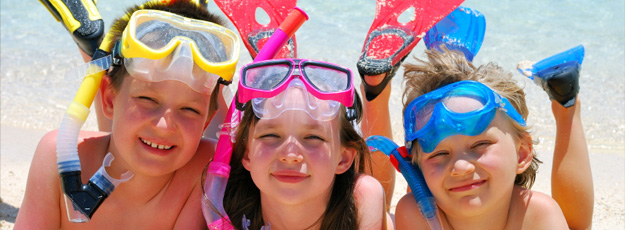Sensory Processing Disorder (SPD) is a complex neurological condition that impairs the functional skills of children. It is more prevalent in children than autism and as common as ADHD, yet it receives far less attention because it has never been recognised as a distinct condition….until now.
At the University of California San Francisco, researchers have found that children affected by sensory processing disorders have quantifiable differences in brain structure.
By using an advanced form of MRI called Diffusion Tensor Imaging (DTI), researchers were able to measure microscopic movements of water molecules within the brain to give detailed information about white matter tracts, the direction of white matter fibres and the integrity of the white matter. White matter is part of the brain that actively affects how the brain perceives, thinks and learns. It moderates information distribution between different grey matter areas of the brain.
The imaging of white matter tracts in SPD subjects detected abnormal white matter tracts involving areas at the back of the brain (association cortex) that serve as connections for the auditory, visual and somatosensory systems involved in processing information. Struggling with how to process this information efficiently can cause a wide range of symptoms including hypersensitivity to sound, sight, touch, poor fine motor skills and easy distractibility.
Anomalies in these tracts in posterial (back) regions of the brain are characteristic of someone with sensory processing problems, where as anomalies in the anterior (front) regions of the brain correlate highly in children with ADHD or autistic spectrum disorders (ASD). The anomalies with the white matter tracts indicate that SPD may be neuroanatomically distinct.
The brain can adapt to white matter damage by finding alternate paths that bypass the damaged areas and as a result can maintain good connections between areas of grey matter. Because of this innate neuroplasticity, Neurofeedback is a learning strategy that is ideally suited to teach the brain to rewire itself to overcome these anomalies. Neurofeedback does this by targeting specific areas of the brain which are shown to be dysregulated on a qEEG (Quantative Electroencephalography). Conventional Neurofeedback and LORETTA Z-Score training are used in combination with Samonas Sound Therapy and Interactive Mentronome to decrease sound sensitivity, distractibility and improve fine motor skills.
Arnett et al. (2013), Abnormal White Matter Microstructure in Children with Sensory Processing Disorders, NeuroImage: Clinical, University of California, San Francisco, USA


